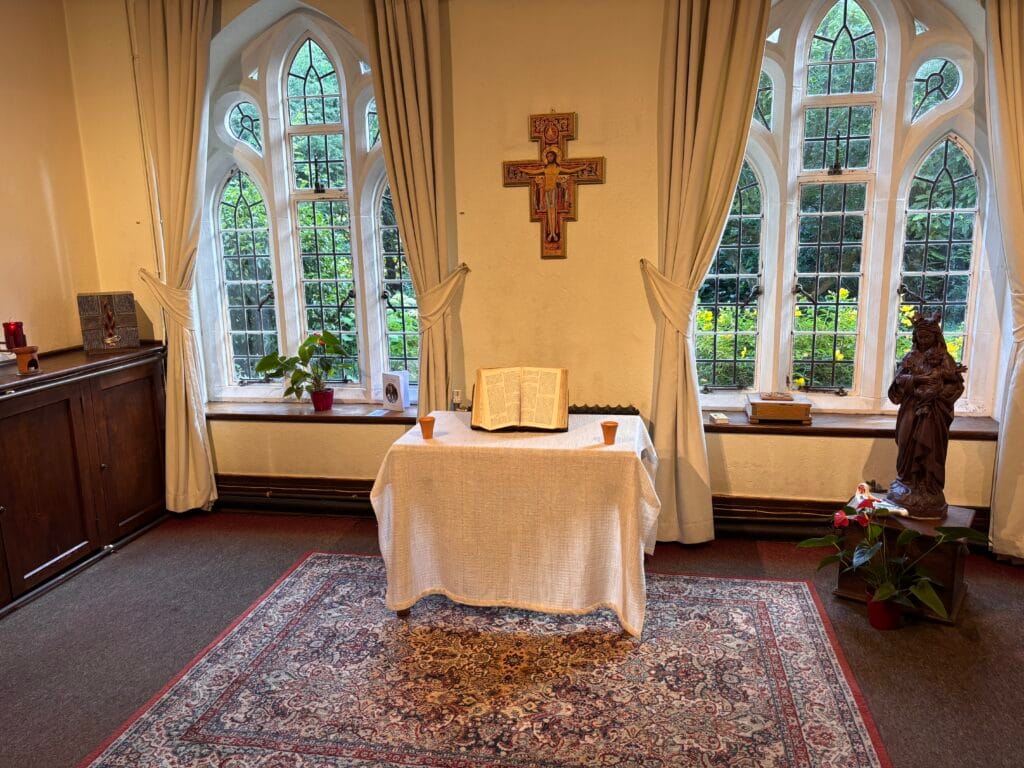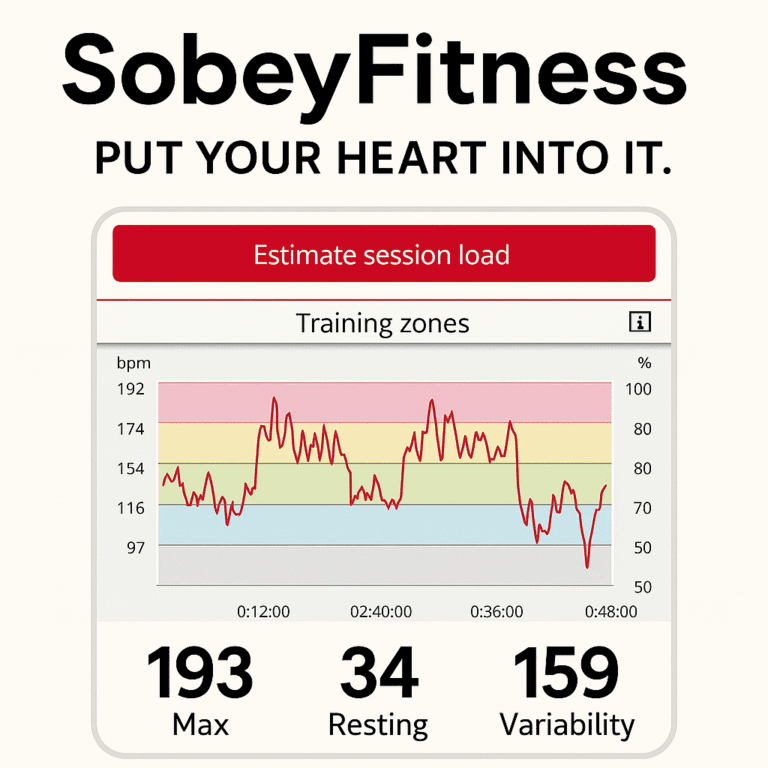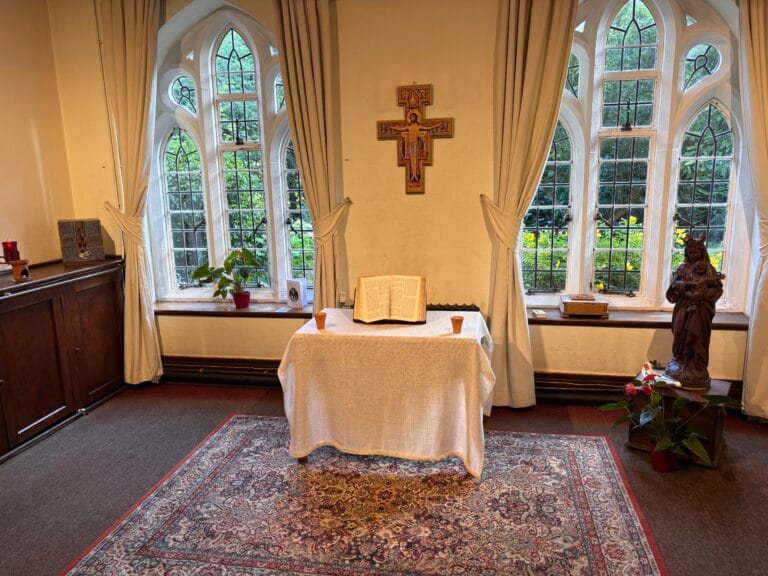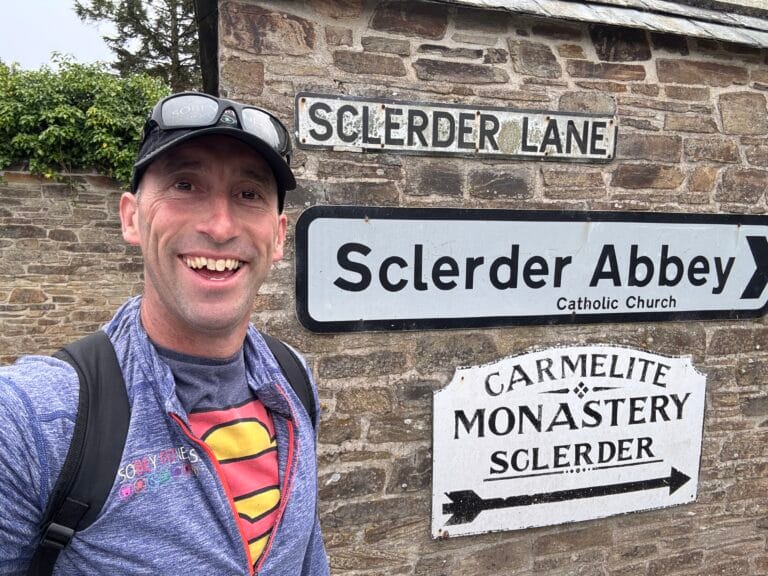Tucked away on the Cornish coast, between Looe and Polperro, lies Sclerder Abbey — a place of deep peace and quiet power. The early morning rooster may not always respect the silence, but even his persistent crow feels like a call to praise.
Sclerder sits within the Parish of Liskeard, part of the Diocese of Plymouth, and has long been a spiritual haven for those seeking stillness, prayer, and connection.
Founded in 1843, Sclerder was first established as a Franciscan Recollect monastery by the French religious order Dames de la Retraite, supported by Sir Harry Trelawny, a local Catholic convert. The abbey’s architecture reflects elements of the Gothic Revival style and has since been home to several religious communities, including the Carmelites and Poor Clares.
The name “Sclerder” is thought to come from a Cornish/Breton word meaning “bright” or “light” — echoing the Marian devotion to Our Lady of Light. That connection between place and purpose continues to shine through the spirit of the abbey today.
Sclerder is no ordinary venue. It’s a religious house — which means it’s more than a building. It’s a place where prayer has been lived daily for over a century. The stones hold the echo of psalms, the rhythm of communal life, and the hush of holy contemplation.
Since 2014, the Chemin Neuf Community — an ecumenical Christian group rooted in Catholic tradition — has made Sclerder its home. Led by the warm and joy-filled Sister Amandine, this French-led community brings life and light to the abbey. Their blend of hospitality, daily prayer, and Spirit-filled openness is offered generously to all who come.
It was back in 2015 that I first visited Sclerder. We were staying nearby at the John Fowler holiday park (A place our FitFam know well!) over Easter, and I’d been looking for a Mass. We ended up at the abbey, and after the service, my daughters took part in an Easter egg hunt in the orchard — a magical little tradition bursting with springtime joy.
Now, a decade later, I walk through that same orchard during retreat, and the memory bubbles back — my girls giggling among the trees, chasing chocolate and sunshine.
This year, once again, Sclerder opened its arms — hosting the Plymouth Diocese Ignatian Spiritual Summer Retreat. The Chemin Neuf community didn’t just provide a space; they invited us into their rhythm. We joined them for daily prayers, community liturgies, and shared silence. I particularly enjoyed Compline (thankfully in English — my old French teacher would have despaired otherwise!).
There’s something uniquely powerful about making a retreat in a place like this. A religious house isn’t just quiet — it’s alive with Spirit. It holds a sacred charge, built over generations through presence, prayer, and devotion. You can feel it. You don’t have to believe anything in particular — the atmosphere does the work. It wraps around you. It helps you remember.
For me, this retreat — bookended by Mass, held in silence, and shaped by Sclerder’s sheltering peace — was another turning point. A pause. A breath. A sacred space to remember who I am — and who I’m becoming.
A chance to recharge, renew, and reboot.
To leave more whole than when I arrived.
And for that, I’m deeply grateful.
But here’s the thing: while churches, abbeys, and cathedrals often feel deeply spiritual, any space can become sacred when we bring the right intention.
Sitting quietly on my paddleboard between Talland Bay and Polperro, bobbing gently with the sea — that’s a sacred space too. So is sitting on the couch with a warm coffee and two minutes of silence.
So, try it.
Choose a spot — a corner of your home, a bench in a park, your bath, your board, your kitchen chair — and let it become sacred.
Pause.
Breathe.
Be still.
Let the clutter fall away and just be happy in that space for no reason. Watch what rises. You might be surprised by what you notice — a memory, a moment, a flicker of peace. Something sacred moving through you like static warmth.
You don’t need a monastery.
You just need a moment.
Namaste — and have a peaceful day.




